Photo

“Do not be tense, just be ready, not thinking but not dreaming, not being set but being flexible. It is being “wholly” and quietly alive, aware and alert, ready for whatever may come.” -Bruce Lee
614 notes
·
View notes
Photo

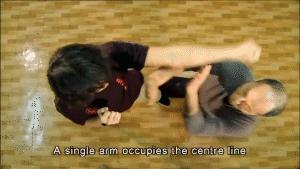
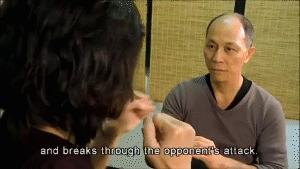

While the existence of a “central axis” concept is unified in Wing Chun, the interpretation of the centerline concept itself is not. Many variations exist, with some lineages defining anywhere from a single “centerline” to multiple lines of interaction and definition. Traditionally the centerline is considered to be the vertical axis from the top of a human’s head to the groin. The human body’s prime striking targets are considered to be on or near this line, including eyes, nose, throat, solar plexus, stomach, pelvis and groin.
Wing Chun techniques are generally “closed”, with the limbs drawn in to protect the central area and also to maintain balance. In most circumstances, the hands do not move beyond the vertical circle that is described by swinging the arms in front, with the hands crossed at the wrists. To reach outside this area, footwork is used. A large emphasis and time investment in training Chi Sao exercise emphasizes positioning to dominate this centerline. The stance and guard all point at or through the center to concentrate physical and mental intent of the entire body to the one target.
Wing Chun practitioners attack within this central area to transmit force more effectively, since it targets the “core center” (or “mother line”, another center defined in some lineages and referring to the vertical axis of the human body where the center of gravity lies). For example, striking an opponent’s shoulder will twist the body, dispelling some of the force and weakening the strike, as well as compromising the striker’s position. Striking closer to the center transmits more force directly into the body.
946 notes
·
View notes
Text
Karate: Retracing Our Steps.
Most of us know about how Funakoshi is the fatherof modern day Karate, and that he was responsible for sending Karate teachersto the west and other parts of the world to teach. But who did he learn from? And in turn, who did they learn from? and so on. Well, I decided to do a little backtracking on this, as far back as possible, hoping to find the Chinese monks.

Now, we know that Bodhidharma, a Hindu monk, is said to be the one who started passing around the art of self defense to young, homeless children, during his travels through China, where he decided to stay and open up a monastery for these young kids, whom he called Shaolin, and many years later, monks from the Shaolin, spread their art and knowledge on their travels. Some of these monks went to the Ryukyu Islands, where they taught their art called Chuan Fa (Kenpo in Japanese).
This is where I want to try to backtrack to. There’s some info on each of the masters mentioned here, but I want to encourage everyone to research each one, or those who interest you most, so that you guys can learn more about who they were and what they did. For this reason, I’m not posting links either. Can’t make it too easy now. =]

Starting back from Gichin Funakoshi’s teachers: Anko Itosu and Anko Azato.
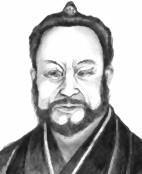
Anko Azato (1827 – 1906) - Not much is known about him. Whatever information can be found is based on Funakoshi’s descriptions of him. Azato was described by Funakoshi as “One of Okinawa’s greatest experts in the art of Karate”. According to Funakoshi, Azato was also a skilled Archer and horse rider, an adept in the art of Jigen Ryu Kendo, and was an exceptional scholar.

Anko Itosu (1831 – 1915) was small in stature, very shy and introverted in his youth. As an adult, he was secretary to the last king of Okinawa, before the Japanese abolished the Okinawan monarchy in 1879.
He began his study in the art of Tode (Karate today) under Nagahama city’s Chikudun Pechin (Okinawan term for the scholar-officials class of the former Ryukyu Kingdom (modern-day Okinawa), the class equivalent of the Japanese Samurai.), but was later on taught, alongside Azato, by Sokon Matsumura.
Itosu helped introduce Karate into Okinawa’s schools. In 1905, he was a teacher of Tode at the First Junior Prefectural High School, where he developed the method of teaching techniques that are still used to this day, by creating the five Pinan, or Heian, so that the students could learn in an easier manner, as he felt that the old forms were too difficult for children. He’s also credited with breaking down the Naihanchi, or Tekki, into the three forms that we know today. In 1908, he wrote the “Tode Jukun” (Ten Precepts of Karate) in a letter to the Ministry of Education and the Ministry of War in Japan, in order to gain their attention.
The letter with the precepts read as follows:

Karate did not develop from Buddhism or Confucianism. In the past the Shorin-ryu school and the Shorei-ryu school were brought to Okinawa from China. Both of these schools have strong points, which I will now mention before there are too many changes:
1. Karate is not merely practiced for your own benefit; it can be used to protect one’s family or master. It is not intended to be used against a single assailant but instead as a way of avoiding a fight should one be confronted by a villain or ruffian.
2. The purpose of karate is to make the muscles and bones hard as rock and to use the hands and legs as spears.
If children were to begin training in Tang Te (Chinese Hand) while in elementary school, then they will be well suited for military service. Remember the words attributed to the Duke of Wellington after he defeated Napoleon: “The Battle of Waterloo was won on the playing fields of Eton.”
3. Karate cannot be quickly learned. Like a slow moving bull, it eventually travels a thousand miles. If one trains diligently every day, then in three or four years one will come to understand karate. Those who train in this fashion will discover karate.
4. In karate, training of the hands and feet are important, so one must be thoroughly trained on the makiwara. In order to do this, drop your shoulders, open your lungs, take hold of your strength, grip the floor with your feet, and sink your energy into your lower abdomen. Practice using each arm one to two hundred times each day.
5. When one practices the stances of Tang Te, be sure to keep your back straight, lower your shoulders, put strength in your legs, stand firmly, and drop your energy into your lower abdomen.
6. Practice each of the techniques of karate repeatedly, the use of which is passed by word of mouth. Learn the explanations well, and decide when and in what manner to apply them when needed. Enter, counter, release is the rule of releasing hand (torite).
7. You must decide if karate is for your health or to aid your duty.
8. When you train, do so as if on the battlefield. Your eyes should glare, shoulders drop, and body harden. You should always train with intensity and spirit, and in this way you will naturally be ready.
9. One must not over-train; this will cause you to lose the energy in your lower abdomen and will be harmful to your body. Your face and eyes will turn red. Train wisely.
10. In the past, masters of karate have enjoyed long lives. Karate aids in developing the bones and muscles. It helps the digestion as well as the circulation.
If karate should be introduced beginning in the elementary schools, then we will produce many men each capable of defeating ten assailants.
I further believe this can be done by having all students at the Okinawa Teachers’ College practice karate. In this way, after graduation, they can teach at the elementary schools at which they have been taught. I believe this will be a great benefit to our nation and our military. It is my hope you will seriously consider my suggestion.
- Anko Itosu, October 1908
This letter was influential in the spread of karate.
Itosu’s style, Shorin Ryu, became known as Itosu Ryu, in recognition of his skills, mastery, and role as teacher.
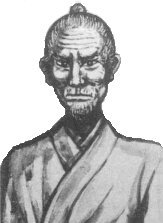
Sokon Matsumura (1797 - 1889) began his study of Tode under the guidance of Sakugawa Kanga. Matsumura had reputation as an expert martial artist, even as a young man. He was recruited into the service of the royal family of the Ryukyu Kingdom in 1816. He became the chief martial arts instructor and bodyguard for the Okinawan King, and later served in the same role for the last two Okinawan kings. Matsumura traveled to China. While he was in China, he studied Chuan Fa at the Shaolin Monastery, and later brought what he learned, back to Okinawa, helped to further develop karate, and was later known as the “Forefather of Shorin Ryu”, as he went on to develop the Shuri-Te which later developed into Shorin Ryu Karate.
Side note: In 1818, Matsumura Married Yonamine Chiru, who was also a martial arts expert, and it was said that she would lift up 130 pound sacks of rice, to sweep the floor underneath. It was also said that she wouldn’t marry anyone who couldn’t defeat her. Supposedly, time and again, men tried, but failed. She married Matsumura, although it isn’t known if they ever did fight.

Sakugawa Kanga (also known as Tode Sakugawa) (1733 - 1815) was a martial arts master, who played a major role in the development of Te, the precursor to modern day Karate. Sakugawa trained under the monk, Peichin Takahara, beginning in 1750, for six years, after which Takahara sent Sakugawa to train under Kusanku, a Chinese master in the art of Chuan Fa, for six more years. It is said that he combined Chuan Fa with his first master’s style, forming what became known as Okinawa-te. After his training under Kusanku, he began teaching the art. He was so recognized as an expert that he was given the name To-de Sakugawa (Sakugawa “Chinese Hand”) by Takahara. He is considered to be the “Father of Okinawan Karate”, and his Okinawa-te became the base for his most famous student’s (Matsumura) Shuri-Te. Sakugawa passed down to his students the kata Kusanku, said to be one of Okinawa’s oldest kata, and developed the Bo kata, Sakugawa no Kon.

Peichin Takahara (1683 - 1760) was a Buddhist monk, mapmaker and astronomer, belonging to an upper class family from Shuri. The word Peichin isn’t a name, but a title similar to that of “Knight” given to some regents of the Court of Shuri. Takahara was known as a martial arts expert, he was highly respected as a great warrior, and his teacher was Chatan Yara. Takahara regarded the martial arts as a way of life, and is attributed to have been the first to explain the principles of Do (Way):
1. Ijo - Compassion, Humility and Modesty.
2. Fo - Seriousness, Devotion and Dedication.
3. Katsu - Deep understanding of techniques and forms.
Kusanku (Kwang Shang Fu) (1670 - 1762) was a Chinese martial arts master, who learned the art of Chuan Fa in China from a Shaolin Monk. He is credited as having an influence on practically every martial arts derived from Karate. Around 1756, Kusanku was sent, as an ambassador of the Qing Dynasty, to Okinawa, where he lived in Kanemura, near the city of Naha. During his stay in Okinawa, he instructed Sakugawa Kanga from 1756 to 1762, the year he died. After his death, Sakugawa developed, and named, the kata Kusanku, in honor of his teacher.
Chatan Yara (1668 - 1756) was known as being one of the first to spread the art of Te throughout Okinawa. At the age of 12, Yara’s parent’s sent him to China to study the Chinese language and martial arts. During his time in China, he mastered the use of the Bo and Sai while studying under the guidance of his teacher, Wong Chung-Yoh. In 1700, he returned to Shuri. Shortly after, he assisted a woman who was being harassed by a Samurai. After avoiding the Samurai’s attack, Yara took an oar from a nearby boat and used it as a weapon. He successfully disarmed and killed the Samurai. Hearing of this daring rescue, local officials recruited Yara to teach martial arts to the locals for the purpose of self defense.
Wong Chung-Yoh (1630 - ????) Very little is known about this man. He was a teacher of a martial art style called Xing Yi Quan, also known as Hsing. His school was located in Fuzhou, in the Fukien Province in China. His most notable student, who produced the lineage for modern Karate, was Chatan Yara.
—-
Up to here, Gichin Funakoshi’s direct lineage is over, or seems to be, at least by what I’ve been able to trace back. But remember, there were other masters that aren’t as notable as the ones mentioned here, not to mention their students. So this is in no way saying that these are the ones and only, but it is more than clear that all karate styles come from the same root, the Chinese martial art, Chuan Fa.
—-
Another master from Okinawa worth mentioning:
Matsu Higa Peichin (1640 - 1720) was a legendary martial artist who influenced the development of Karate and Kobudo, especially in the art of the Bo (staff). He was a student of the Chinese emissary, Wanshu, who taught him Chuan Fa. Legend states that Matsu Higa, with his Bo, stood up to the head-hunters of Formosa, and to Japanese pirates from the north, and never lost a battle. His contributions live on in several weapons kata, especially for Tonfa, Sai, and Bo: Matsu Higa no Tonfa, Matsu Higa no Sai and Matsu Higa no Kon.
Wanshu (Wang) (1621 - 1689) - Wang was the leader of an ambassadorial mission from China, sent by the Qing government in 1683 to the village of Tomari. He was a diplomat, poet, calligrapher, and a martial artist of Shaolin White Crane. He is credited with having taught Chaun Fa to the gentry of Tomari. The kata Wanshu was either created by Wang, or his students developed it in his honor. Whichever the case, this kata is practiced to this day in many styles of karate under the name Wanshu, Anshu, Unsu and Empi (Gichin Funakoshi renamed it Empi for use in his school). The two main versions of this kata are Matsumura’s and Itosu’s versions. This kata is also practiced in various Korean styles such as Tang Soo Do and Soo Bak Do. They also have veried names for this kata: Wangshū, Wang Shu, or Yun Bi in Korean. This kata is often reserved for advanced students, because of its difficulty.
—-
So in the end, my friends, there’s no absolute Way. Remember that next time somebody tells you about how their styles are the only truth.
I hope you’ve enjoyed this post! =]
843 notes
·
View notes
Video
Hello. I sent the original request for replacing the capping heads. But as you can see this machine is different from the one in the video you posted. And even with the gears stopped I'm unable to untwist the heads as demonstrated. Pleas help. @vacuumemulsifiers
1 note
·
View note
Photo




Black female athletes who keep making US history.
165K notes
·
View notes
Video
Learning the Wing Chun but doing it with TaiChi "flavor". Yeah I messed up d order of techs but feel me tho.
1 note
·
View note
Photo




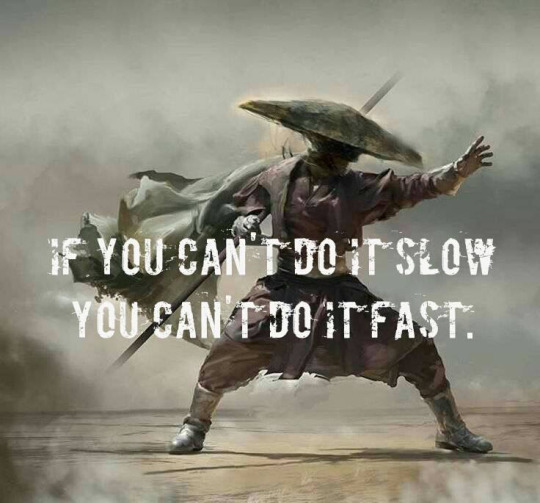

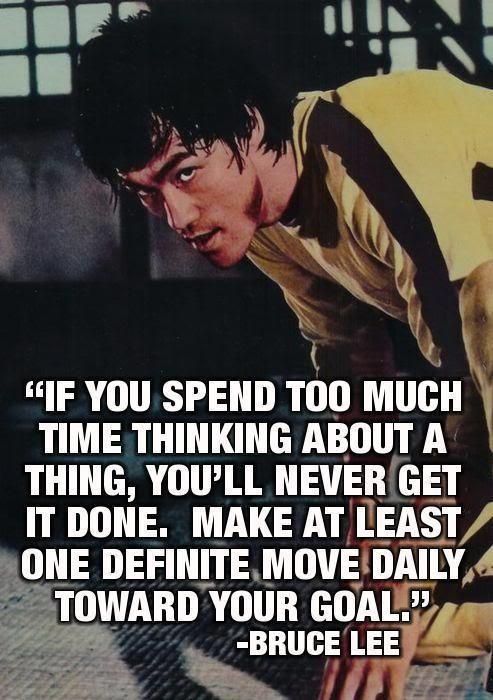
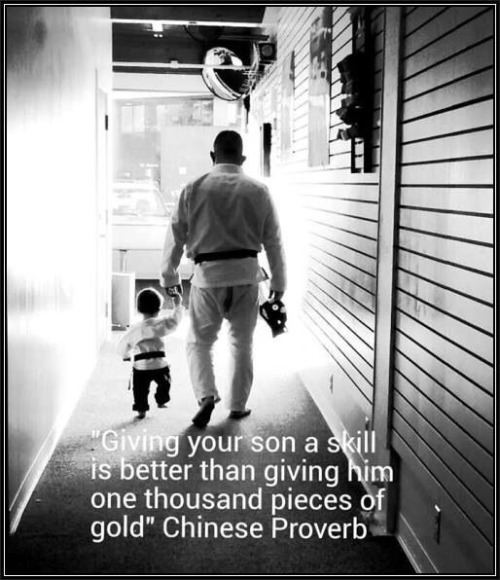


Kung Fu Quotes Told You A Lot…
Pay attention on tai chi clothing on http://www.icnbuys.com/tai-chi-clothing-uniform.
Instant follow,instant follow back!
105 notes
·
View notes
Text
A Little Experiment
In these tumultuous times, we need to stand together more than ever. But if the pattern is as observed, we’ll holla for a week and head back to the mall to brand our bodies. And that is exactly why I propose a small experiment.
For 24 hours, no one who identifies themselves as black and outraged by the current events should post anything to any social media. A true #blackout.
This action is not to show ‘them’ anything. This small action is to show EACH OTHER that we are together. THAT WE ARE ONE.
3 notes
·
View notes
Video
vine
This dude samurai sliced a 100 MPH fastball
29K notes
·
View notes
Text
Gettin Back On My Horse
It a been a while since I was on my 2+hour training regime. But I'm getting things together. And although I wasn't " on it" like the masters recommend I always kept Tai Chi Chuan in heart and in mind. Here I will post my thoughts and questions. Hopefully I can find others players to build with. NeiGong For Life!!!
0 notes
Photo

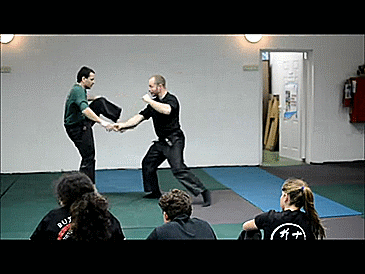


Bujinkan Ninjutsu training in Haifa, Israel (video here)
434 notes
·
View notes
Video
youtube
In this technique we explore alternating techniques with both smashing and rising attacks, as well as alternating to which side of the body as the staff is brought down. The footwork is straightforward, so be sure to stay on track! Pay close attention to hand positioning and sliding to create better reach and range when attacking. Have fun!
65 notes
·
View notes
Photo





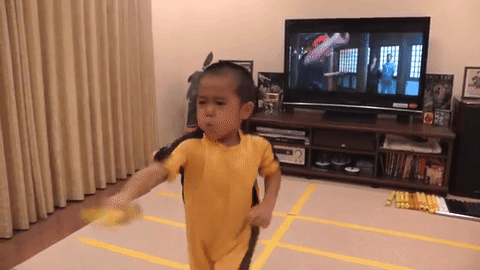
Ryusei’s Training is not easy…sidekick & backspinkick & nunchaku, and so on.
The most professional kung fu tai chi shoes on http://www.icnbuys.com/tai-chi-shoes.
follow back
741 notes
·
View notes
Text
When you have to practice a technique on your weak side.

#martialartsfeels
168 notes
·
View notes
Photo

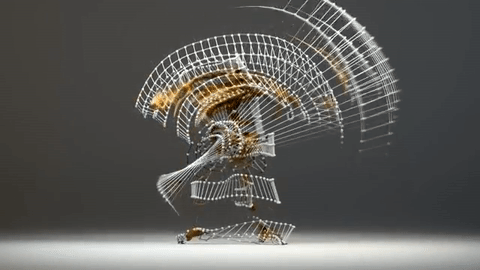
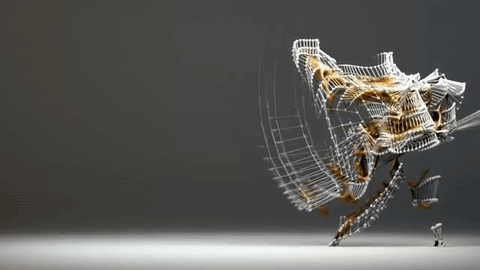

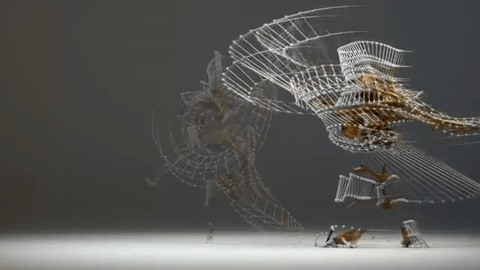
The Physics of Kung Fu Brought to Life Through Motion Capture Visualizations .
The most classc Kung Fu Feiyue Shoes on http://www.icnbuys.com/feiyue-shoes.
follow back
127 notes
·
View notes
Quote
Break from what you know and you will know more.
Ip Man, The Grandmaster (via nezua)
103 notes
·
View notes
